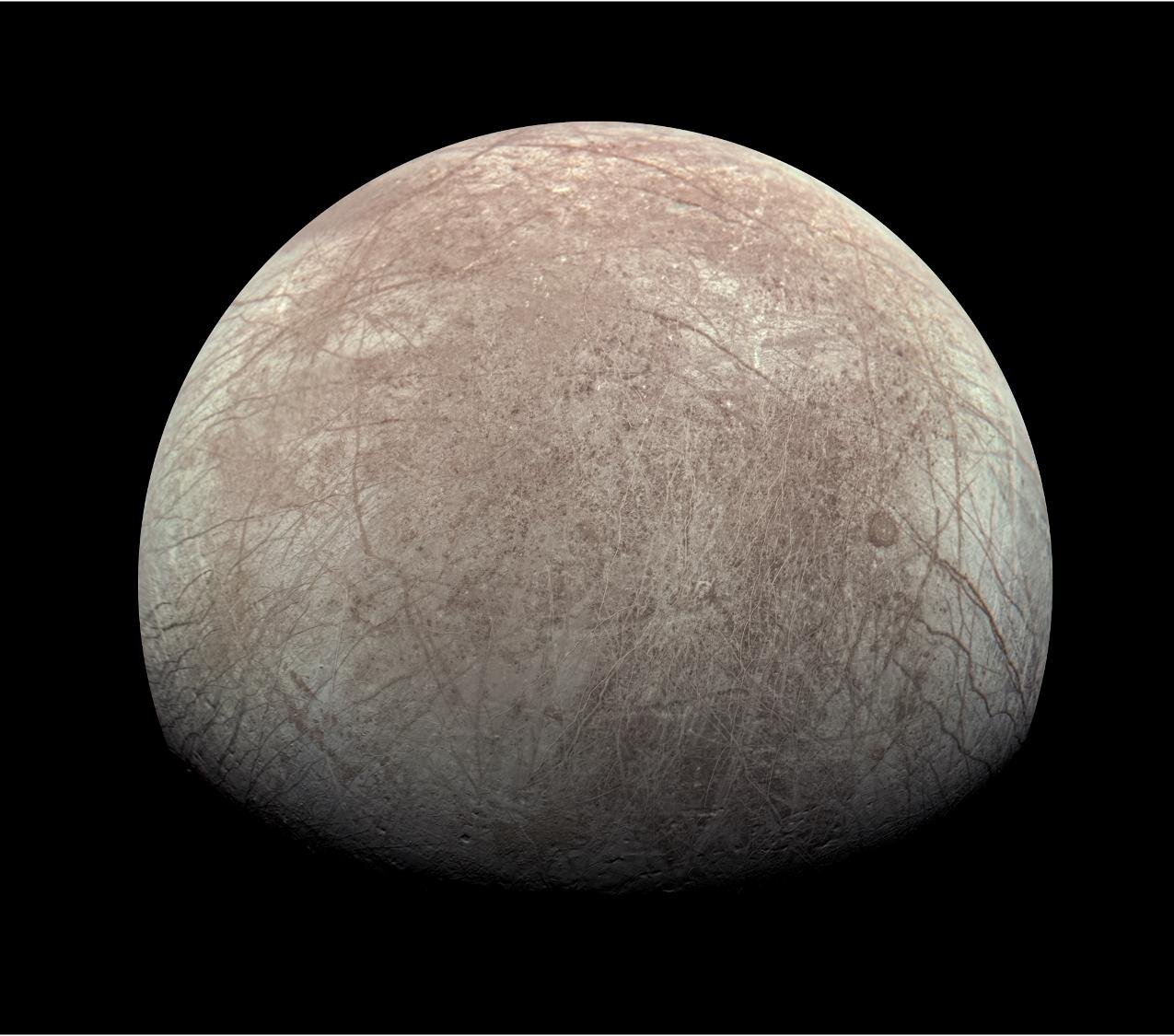Scientists believe that the icy crust of Jupiter’s moon Europa does not turn synchronously with its internal parts. The reason for this is the undercurrents that arise as a result of the internal heating of the celestial body.

Europa’s icy crust
Scientists from NASA report that they have understood how the icy crust of Jupiter’s moon Europa is not turning around at the same speed as its inner layers. Today it is considered proven that there is an ocean several hundred kilometers deep under it, which separates it from the rock core.
Until now, the probability that the outer shell of Europa not only floats freely, but also rotates at a different speed than its core is associated with the influence of Jupiter. However, now scientists are convinced that the reason for this may be internal forces, namely undercurrents.
The possibility of their occurrence was proved some time ago. The root cause of these phenomena is the internal heat of the planet, which in some places heats the water at the bottom. Convection occurs, causing it to rise up. And then these flows gradually begin to spread apart.
Undercurrents
At the center of the new study is the proof of the idea that these currents can exert significant lateral pressure on the layer of ice above them. Computer modeling fully confirms this assumption. From it, it can even be assumed that this process is responsible for the opening and closing of cracks, which are observed in large numbers on the surface of the moon.
All that is needed now is to confirm these assumptions with observations. This will be able to produce the Europa Clipper spacecraft, the launch of which is scheduled for 2024. It is planned that in 2030 it will reach the Jupiter system and will be able to measure not only how fast the crust of Europa rotates, but also what changes are happening to it.
According to phys.org
Follow us on Twitter to get the most interesting space news in time
https://twitter.com/ust_magazine

